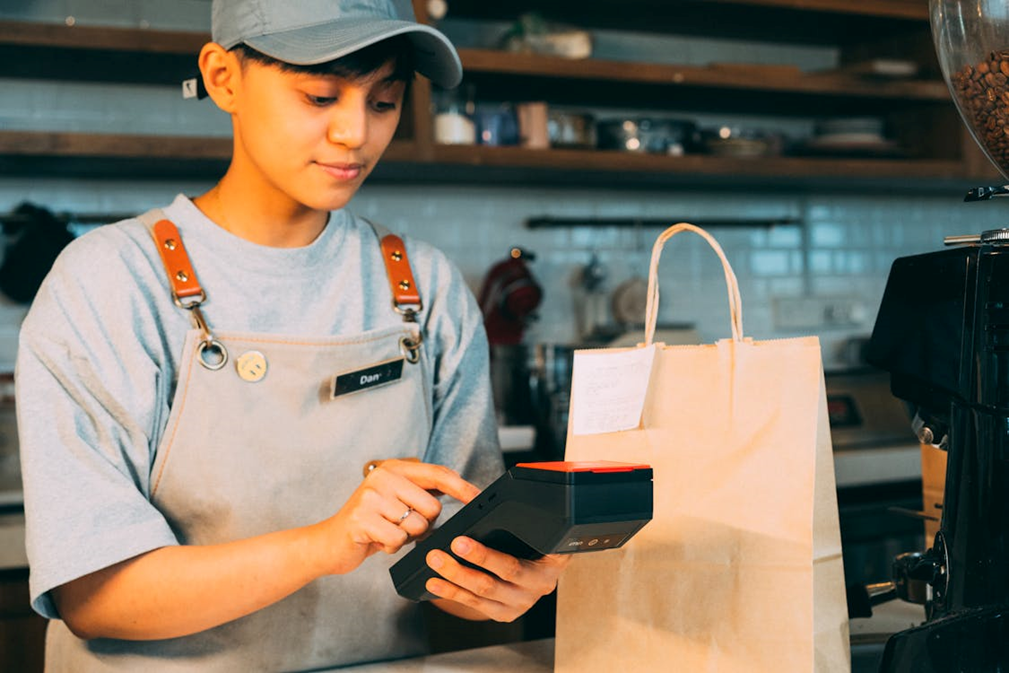
We all love and cherish the role technology has had on our lives. It has been slowly seeping into our lives, affecting and enhancing various aspects of our lives. However, we often overlook its effect on the restaurant sector, as we often take advantage of it. Hence, in this article, we discuss all its advancements in the dining world, providing everything from the use of AI to the integration of QR.
Throughout this guide, we will also discuss the challenges and considerations that these technologies present. Moreover, we will also tackle the critical aspects of maintaining customer trust through data security and privacy laws. Hence, join us as we explore the exciting intersection of culinary arts and technology.
Streamlining Operations with Technology Clean-Up
In the digital era, restaurants are not merely culinary hubs. They have now become technology powerhouses. As we embrace software for inventory management, customer engagement, and operational efficiency, the need for digital decluttering becomes paramount. Hence, for establishments using Mac systems, knowing how to remove apps from Mac is a crucial aspect of maintaining a streamlined, efficient digital environment. Hence, learning how to delete apps becomes an integral part of cleaning up and making sure your activities are streamlined. The simple act of knowing how to uninstall apps on Mac ensures that the system runs smoothly. Hence, you can focus resources on technology that enhances the dining experience.
Seamless Reservations and Waitlist Management
The transformation in reservations and waitlist management through tech is part of a larger trend. By leveraging apps and intelligent systems, restaurants are not just streamlining operations. They are also enhancing every step of the diner’s journey.
Revolutionizing Table Booking Through Apps
Gone are the days of phoning in to book a table and then hoping for the best. The advent of reservation apps has significantly altered how diners secure their sports. This technology in restaurants is not just about convenience. It is also about empowerment and flexibility. Diners can now browse different restaurants, compare availability, and even select specific tables right from their phones.
Moreover, these apps often have added functionalities. They can provide reminders, offer special request options like dietary preferences, and even allow for pre-ordering. The benefit, however, extends beyond the experience. It helps restaurants forecast demand, prepare in advance, and reduce the number of no-shows through reminders.
Eliminating Queues with Intelligent Waitlist Systems
Intelligent waitlist systems have taken the hassle out of waiting for a table. Instead of standing in line, customers can join a digital queue and enjoy the freedom of wandering nearby. These work by estimating wait times more accurately, based on real-time data, and updating customers. You don’t have to feel the frustration of an indefinite wait. Also, restaurants can manage their seating capacity more efficiently.
Enhancing Efficiency Through Smart Ordering Systems
Another one of the great restaurant revolution technologies is the introduction of smart ordering systems. They include touch screen menus and self-service kiosks, which are not just about keeping up with the digital age. They are also about reshaping the very fabric of the restaurant experience.
Touchscreen Menus and Self-Service Kiosks
Picture walking into a restaurant and being greeted by an interactive touchscreen. This is no longer a sci-fi scene but a reality. These digital menus and kiosks have become a standard. For customers, this means the freedom to browse the menu at their own pace. Allergen information and nutritional facts are also available at the touch of a finger.
Mobile Ordering
The revolution, luckily, does not stop inside the restaurant. Mobile ordering extended the dining room to virtually anywhere a customer wants. With a few taps, diners can now order their meals. The adaptability introduced has changed the industry, particularly in an era where efficiency is paramount. In response, dining establishments have evolved, fine-tuning their processes to accommodate orders beyond the conventional sit-down service.
Customizing the Dining Experience Through AI
Another great smart restaurant technology is artificial intelligence. This leap is about redefining the essence of personalized service and culinary delight. Below, we explore how AI-powered menu recommendations and the strategic use of data analytics are setting new standards.
AI-Powered Menu Recommendations
Picture entering a diner and encountering a menu that understands your tastes. This is not a fanciful idea but an actual scenario brought to life by AI. These systems can analyze past orders, dietary preferences, and even current taste trends. This level of customization enhances the dining experience and elevates it to new heights.
Personalized Service Through Data Analytics
Beyond the menu, AI and data analytics redefine what personalized services look like. By gathering data, restaurants can offer a dining experience that feels bespoke. This could mean remembering a regular’s favorite table, anticipating a diner’s need for a high chair, or even adjusting the ambiance. The strategic utilization of data goes a long way in building loyalty and enhancing customer satisfaction.
The Integration of Robotics in Restaurants

The use of robotics in any sector has been stirring up quite the conversation. While many people are worried about it replacing jobs, we cannot deny its apparent benefits. Below, we take a closer look at how automated kitchen assistants and robots are becoming key players.
Automated Kitchen Assistants
In the heart of the kitchen, robotic assistants are becoming indispensable. These machines are designed not to replace staff but to work alongside them. They handle repetitive, time-consuming tasks from chopping vegetables to flipping burgers. The impact? Kitchens can operate at a faster pace, reducing wait time for consumers.
Robots in the Front of House
Stepping out of the kitchen now, robots are starting to make appearances in more visible roles. From greeting guests to delivering meals, these robots are redefining the concept of service. But is this just a passing trend? The truth lies somewhere in between. While the novelty factor cannot be ignored, the functionality and potential benefits are undeniable. They can now handle mundane tasks, such as taking orders and clearing tables.
A Shift Towards Security and Convenience with Contactless Payments
With over 50% of Americans utilizing contactless payment options, restaurants must adapt to this growing shift. It is a growing adoption, which is creating a movement driven by the dual engines of convenience and security.
The Rise of Mobile Wallets and QR Code Payments
The era when settling a bill meant either paying cash or using a card has passed. Now, mobile wallets and QR codes have risen in popularity. This method is not just about speed; it is about integrating payment processes into our digitized lifestyles. Mobile wallets leverage NFC to enable payments with just a tap.
The Benefits of Going Cashless
One significant advantage is efficiency. Transactions can be completed faster, reducing wait times and streamlining the dining experience. This efficiency is a boon for customers but also for restaurants. It allows them to serve more diners and reduce the time spent managing cash. Moreover, in our world where we are becoming increasingly conscious of health and hygiene, the appeal has surged. The less we handle cash, the more we mitigate the spread of germs.
Challenges and Considerations in Implementing Restaurant Technologies
While we have discussed the advantages of innovative technology above, it is just as paramount to discuss the challenges it brings to restaurants and customers. Among the most pressing issues are finding the right balance between advancements and the irreplaceable human touch.
Balancing Tech with the Human Touch
The essence of dining out transcends the mere act of eating. It is about the experience, ambiance, and personal interaction that comes with it. Navigating the delicate balance between improving the dining experience and preserving personal interactions is critical. For instance, automated ordering systems can make service more efficient. Yet, they may diminish the direct engagement between customers and restaurant staff.
The challenge lies in leveraging technology to improve efficiency without diminishing the warmth and personal connection. Restaurants need to strategically implement technology in a way that complements rather than replaces the personal touch.
Privacy and Data Security
This shift towards digitalization brings data privacy and security to the forefront of concerns for both customers and restaurants. The challenge is twofold: ensuring that customer data is collected and safeguarding this data against breaches. Hence, restaurants must navigate the complex digital landscape. This includes implementing robust cybersecurity measures, transparent privacy policies, and secure payment systems.
Conclusion
To conclude, as tech continues to reshape the restaurant industry, it brings with it a host of advantages and disadvantages. From enhancing efficiency and personalizing the dining experience through AI, maintaining the human touch is complex. Each innovation, while promising to revolutionize service delivery, also demands careful consideration of privacy and data security.
As the industry evolves, the key to success lies in striking a delicate balance. That is leveraging technology without losing sight of personal connections and sticking to consumers’ expectation. In this transformation, restaurants must navigate these waters with sensitivity and foresight.

